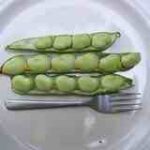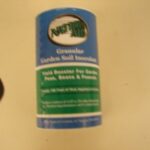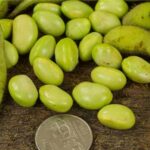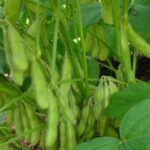BEANS, BUSH TYPE SNAP Approx. 1,500 seeds per pound.
Beans are among the richest food products which the good earth yields. In the chemistry of food they supply
carbohydrates, proteins, vitamins and minerals. Beans are easy to grow, well suited for different types of soil
from heavy clay to light, sandy soils. Plant in spring after danger of frost is past and soil has warmed up to
at least 60F. Coat bean seed with a bean and pea inoculant. Direct sow at 1-1.5″ deep, 2-3″ apart in a single
row spaced 30-36″ apart or a double row spaced 8″ apart. Keep weed free. Pick pods when filled out to a nice
size before pods bulge. TIP: Here is a great a way to increase your bean yield: after bean plants
are about 4-6″ high, we spread Bradfield fertilizer along the bean row at the rate of 4-6 pounds per 100′
of row just before we till them. A trickle drip irrigation line is also laid along the row. Make sure your bean
plants get at least 1″ of water per week. Do not over water, as bean plants drown easily. After each picking
we also give them some more water. Good luck. You will need 1 pound of seed per 100′ row or 60 lbs/acre.
PLANTING: BUSH TYPE: After soil has warmed up to at least 65-70F, till soil. Coat seed with a bean and pea
inoculant. ( see page # 7 ) Direct sow seeds in soil at 1″ deep, 3-4″ apart in a single row spacing of 30-36″ apart.
SOYBEANS “EDAMAME”
For planting directions see lima beans.
to use as green soybeans. Best flavor and weight is attained just before pods start to loose their bright green color. At this point
strip remaining leaves off plants. Remove pods from plant. For ease of shelling green soybeans, steam or boil for about 5
minutes. Shell. Use fresh or freeze for later use. DRY SOYBEANS: After about 90% of leaves have fallen off plants, pull
plants. Hang in a dry, cool location until completely dry. Shell pods. Store in jars or freeze for later use.








